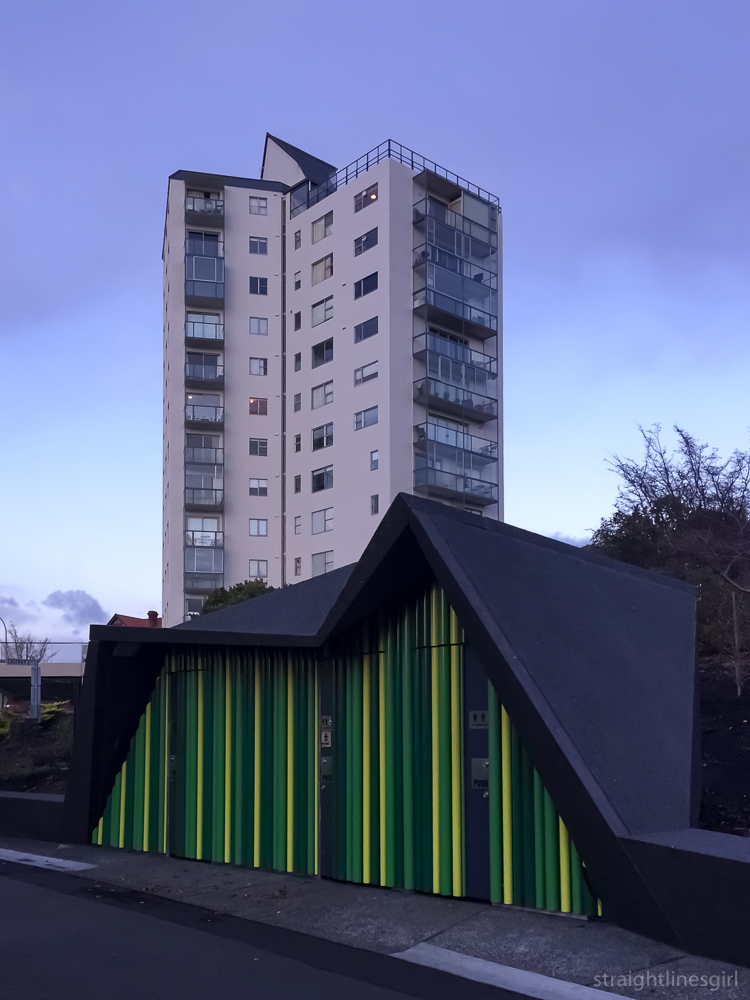Concluding Saturday’s Open House Hobart journey, Lil Sis and I visited the Princes Park Magazine, underground from my favourite public toilets in Hobart.

We met Sarah, the Senior Cultural Heritage Officer from the Hobart Council, who told us some of the history of the site, which was built to house gunpowder for the guns of the battery that was built above it. There were a number of batteries built around the River Derwent from 1804 to protect the port from potential invaders over the years, including French, Russian (in the mid to late 19th Century) and German (around the time of World War II) fleets. These include the Alexandra Battery in Sandy Bay, The Queens Domain Battery and the Kangaroo Bluff Battery on the Eastern Shore, which we visited a couple of years ago through Open House.
Underneath the popular Princes Park in Battery Point, a disused, fully intact subterranean magazine can be found. Built in 1840 to carry 144 barrels of powder, or 200 rounds, the Prince of Wales Battery became a public recreation ground in the 1880s. Explore the subterranean space, designed as a ‘room within a room’ to absorb the shock of accidental blast.
Open House Hobart

In what sounds like a series of blunders of judgment by people who were a bit too worried about being invaded, there were three batteries built in this area. The first, the Mulgrave Battery (1818), was near the current CSIRO site and too close to sea level for anyone to be able to see any potential threats sailing up the river. The batteries on the southern tip of Sullivan’s Cove led to the promontory being called “the battery point”, which eventually became the name of the entire suburb.
According to the ABC, it’s been described as a “poor pitiful mud fort” that was likely to shatter if fired upon, and as noted, by the time anyone saw any threatening boats from there, it would already be too late.
The Prince of Wales Battery, further up the hill, replaced the Mulgrave Battery in 1840. It, along with the original Prince of Wales Hotel nearby, was named after Queen Victoria’s son Albert Edward, the Prince of Wales. The magazine we visited was built underneath this battery to store the gunpowder. Sarah noted that it was rather small, able to hold 144 barrels, which was much less than the Queen Victoria magazine on the Domain (which we saw a couple of years ago) could hold. The Albert Battery was subsequently built even further up the hill during the Crimean War in the 1850s.
The Royal Engineers designed the powder magazine, and Sarah explained how it was built on a “room within a room” principle. It actually looked like a little one-room house with a gabled roof and four-feet thick walls that would absorb the impact of any accidental blast. Neat hey. There were steps outside the room leading up to the battery.

It was all covered over in the 1860s and the batteries were decommissioned in 1882, when the land was handed over to the Hobart Council. The council redeveloped it into a park in 1934, when the magazine was “rediscovered” and the new entrance and the iron gates were constructed, together with the plaque that has a fairly major mistake on it. Most of the time these are kept locked and Sarah said it’s great to be able to open it up for tours like this. It was an interesting tour and built on some of the history we already knew about the battery system dotted around the city.
Sarah also talked about how this all linked in with the semaphore signalling system used in the 19th century, and mentioned the nearby Signalman’s Cottage, which featured in an episode of Restoration Australia. It would appear I am the only person in Hobart who hasn’t seen this.





